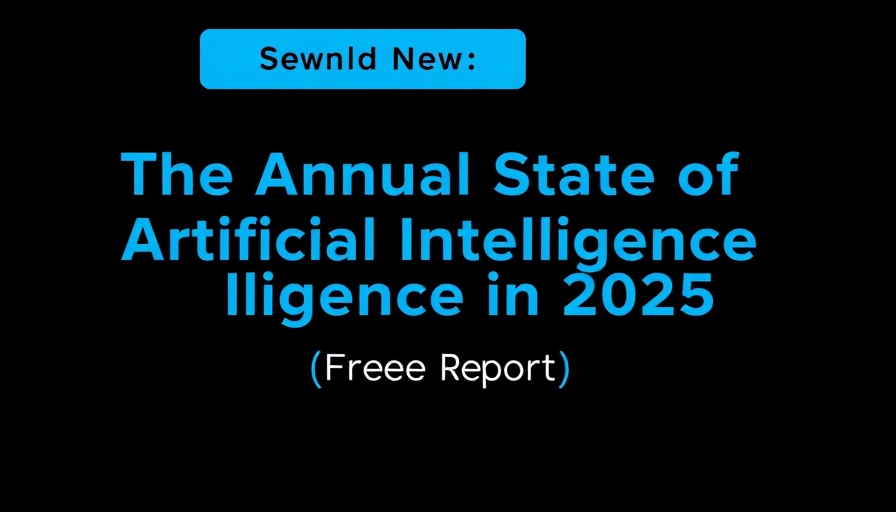
AI in Marketing: A Growing Influence
As artificial intelligence (AI) continues to gain momentum in various industries, its impact on marketing is profound and undeniable. Recent research indicates that around 74% of marketing professionals are leveraging AI tools to enhance their strategies. However, with this extensive usage comes a significant responsibility: the need to address inherent biases that could distort marketing messages and alienate potential customers.
The Challenge of Bias in AI
Many marketers operate without a critical understanding of how biases in AI can affect consumer perceptions and brand reputation. Bias may stem from training data reflecting stereotypes or social prejudices, leading to skewed representations of target audiences. This is particularly concerning for small and medium-sized enterprises (SMEs) looking to connect authentically with diverse consumers. The core of effective marketing often lies in ensuring customers feel represented by the brands they choose.
The Fundamental Question Consumers Ask
Decoding consumer behavior reveals that potential customers are subtly evaluating if a product is suitable for them. This is often encapsulated in one central question: “Is this product for someone like me?” To answer affirmatively, brands must minimize biases throughout the customer journey. Every interaction, from digital ads to product descriptions, sends signals that can either affirm or challenge a consumer's sense of belonging.
Utilizing AI to Detect Bias
AI can be a double-edged sword, with the potential to both perpetuate biases and help identify them. To effectively implement AI in a way that fosters inclusivity, it’s crucial to provide comprehensive context to your AI systems. For instance, guiding the algorithm to adopt a specific persona can lead to more tailored and sensitive outputs. Experts suggest thinking of AI as a well-trained puppy that needs specific direction to act appropriately within your business environment.
Best Practices for Inclusive AI Usage
The implementation of thoughtful strategies can significantly mitigate bias in AI-driven marketing:
- Diverse Training Data: Ensuring that AI learns from a mixture of perspectives can help eliminate biases in its outputs. Brands should prioritize a variety of demographics in their training datasets to achieve a holistic understanding of their consumers.
- Transparent Processes: Companies must commit to transparency in how they utilize consumer data. By openly communicating these processes, businesses can develop trust with their audience and create a more inclusive environment.
- Regular Audits: Teams should conduct frequent checks on AI performance to catch and correct biases that may diminish the effectiveness of marketing strategies.
- Incorporate Human Oversight: Employing a human-in-the-loop system allows marketing professionals to review AI output for potential biases, ensuring the final content promotes inclusivity.
- Feedback Mechanisms: Providing channels for consumer feedback can reveal insights into how marketing messages are received and perceived, enabling brands to adjust their approaches as needed.
The Road Ahead: Trends in Bias Mitigation
As we look to the future, significant trends are emerging in bias mitigation strategies within AI marketing. The rise of specialized tools aimed at increasing fairness in machine learning is notable; frameworks such as Google's TensorFlow Fairness Indicators are being used to embed fairness constraints into algorithms. These innovative tools can empower marketers to create AI systems that are not only effective but equitable.
Actions You Can Take Now
SMEs should take proactive steps to evaluate their current AI practices. Start by auditing your content strategies to identify potential bias in marketing messages. Develop a guideline for training your AI to be more inclusive and utilize diverse datasets. This foundational work sets the stage for building a brand that resonates positively across all demographics.
Final Thoughts
Understanding and mitigating AI bias is no longer optional; it is crucial for the success of contemporary marketing. As brands cultivate more inclusive practices, they pave the way for enhanced consumer trust and engagement. By addressing biases head-on, businesses not only protect their reputations but also foster healthier consumer relationships and drive increased conversions.
If you're ready to elevate your marketing strategies and promote a more inclusive approach to AI, consider implementing these best practices today. For valuable insights into contemporary marketing trends and effective AI strategies, stay connected with industry updates and resources.
 Add Row
Add Row  Add
Add 



Write A Comment